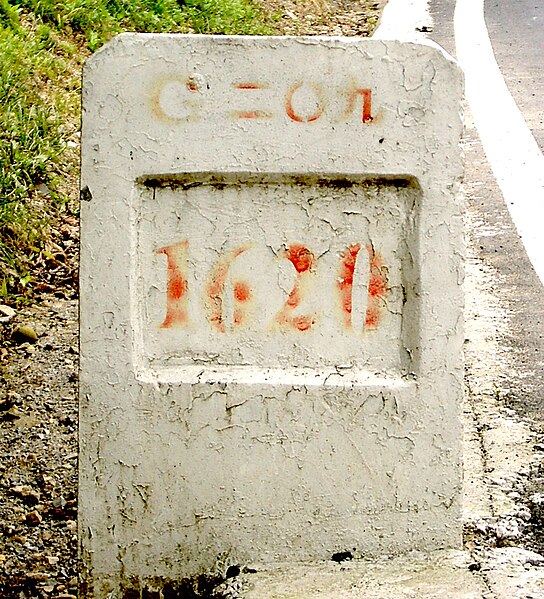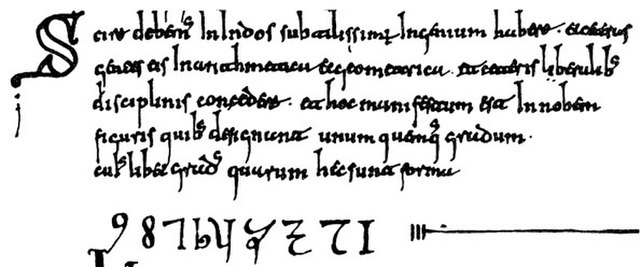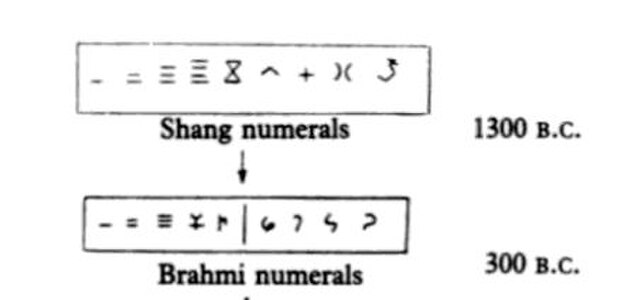Chinese numerals are words and characters used to denote numbers in written Chinese.
Chinese and Arabic numerals may coexist, as on this kilometer marker: 1,620 km (1,010 mi) on Hwy G209 (G二〇九)
Shang oracle bone numerals of 14th century B.C.
West Zhou dynasty bronze script
Counting rod numeral example from the Yongle Encyclopedia showing the number 71,824
The ten Arabic numerals 0, 1, 2, 3, 4, 5, 6, 7, 8, and 9 are the most commonly used symbols for writing numbers. The term often also implies a positional notation using the numerals, as well as the use of a decimal base, in particular when contrasted with other systems such as Roman numerals. However, the symbols are also used to write numbers in other bases such as octal, as well as for writing non-numerical information such as trademarks or license plate identifiers.
The first Arabic numerals in the West appeared in the Codex Albeldensis in Spain.
A page of the Liber Abaci. The list on the right shows the Fibonacci sequence: 1, 2, 3, 5, 8, 13, 21, 34, 55, 89, 144, 233, 377. The 2, 8, and 9 resemble Arabic numerals more than Eastern Arabic numerals or Indian numerals
A German manuscript page teaching use of Arabic numerals (Talhoffer Thott, 1459). At this time, knowledge of the numerals was still widely seen as esoteric,[citation needed] and Talhoffer presents them with the Hebrew alphabet and astrology.
Chinese Shang dynasty oracle bone numerals of 14th century B.C.








